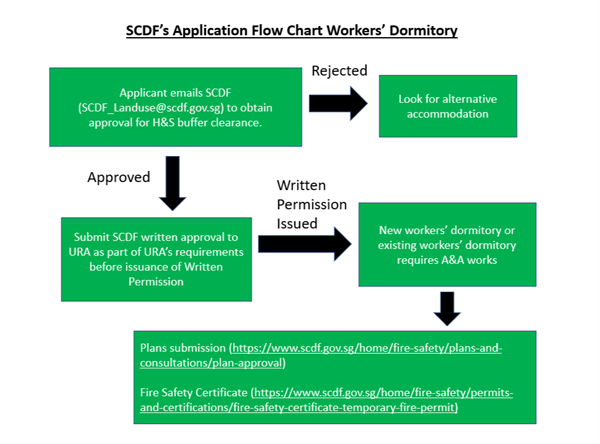Construction worker dies after falling from roof; 6th workplace fatality this year
SINGAPORE: A 33-year-old construction worker died after falling from a height of 4m while conducting waterproofing work on a roof, making him the sixth workplace fatality reported this year.
The accident occurred at about 9am at 2 Marsiling Lane on Feb 26, said the Ministry of Manpower (MOM) on Friday (Mar 3).
The man was taken to Khoo Teck Puat Hospital where he succumbed to his injuries on Wednesday.
MOM said it is investigating the accident and has issued a full stop-work order on the worker's employer Guan Teck Construction 2000, which is also the occupier of the building.
Lapses in the company's safety practices were also found.
"The company will be debarred from hiring new foreign workers for three months, and its management and safety personnel will have to personally account for the accident to MOM," the ministry said.
MOM added further action may be taken depending on the conclusion of the full investigation.
"We will continue to take strong action against companies who fail to put in place the necessary measures to ensure the safety of their workers," said MOM.
When working at height, companies must ensure that adequate fall prevention measures are implemented. Workers must also be provided with adequate training and proper instructions, as well as equipped with appropriate equipment to prevent falls, the Manpower Ministry said.
Last month, MOM extended the heightened safety period imposed on companies in higher-risk industries by three months from Mar 1 until the end of May, with additional measures such as higher penalties for workplace safety breaches.
The heightened safety period was introduced in September 2022 for six months to address the "concerning rise" in workplace fatalities.
CONSTRUCTION COMPANY FINED S$200,000
Another construction company was fined S$200,000 on Feb 24 under the Workplace Safety and Health Act (WSHA), said MOM in a separate statement on Friday.
The company, Startly Construction, had failed to ensure safe work procedures to mitigate risks for workers using a scaffold, which led to the death of one worker.
The worker, Mr Macha Duang, and his colleague were performing patching works inside a circular drainage pipe 6.5m below ground on Jul 23, 2019.
The two workers had to manoeuvre a 600kg mobile tower scaffold inside the drain, including across areas where the floor level was uneven.
"As proper ramps were not provided, Duang and his co-worker used an improvised ramp," said the Manpower Ministry.
The two men decided to push the scaffold on their own in a breadthwise direction, which carried the risk of the structure toppling towards them.
MOM said while the workers were aware that the safer method was to move the structure in a lengthwise direction, with at least five employees involved in the process, this method was neither written down nor enforced by Startly Construction.
While the scaffold was being pushed by the two workers, it toppled backwards and collapsed on Mr Duang, who was pronounced dead at the scene by a paramedic. His colleague managed to move away.
MOM's investigations found that the company had failed to properly consider the risks from the use of the scaffold by its employees to carry out work at heights.
It also failed to provide a suitable ramp to move the scaffold up the steps, as well as develop and implement safe work procedures for employees moving the scaffold, said the ministry.
"Under the WSHA, employers are required to take reasonably practicable measures to ensure the safety and health of their employees at work."
This means that the employer must assess the risks associated with the work, establish safe work procedures, and communicate them to workers so that they are aware of the risks and the precautions to guard against those risks, MOM added.
"In this case, Startly Construction had failed to establish safe work procedures to mitigate risks, which led to tragic consequences."
The Manpower Ministry said it will not hesitate to take enforcement action against errant employers for safety lapses. Employers and responsible persons will also be prosecuted if wrongdoing is found















